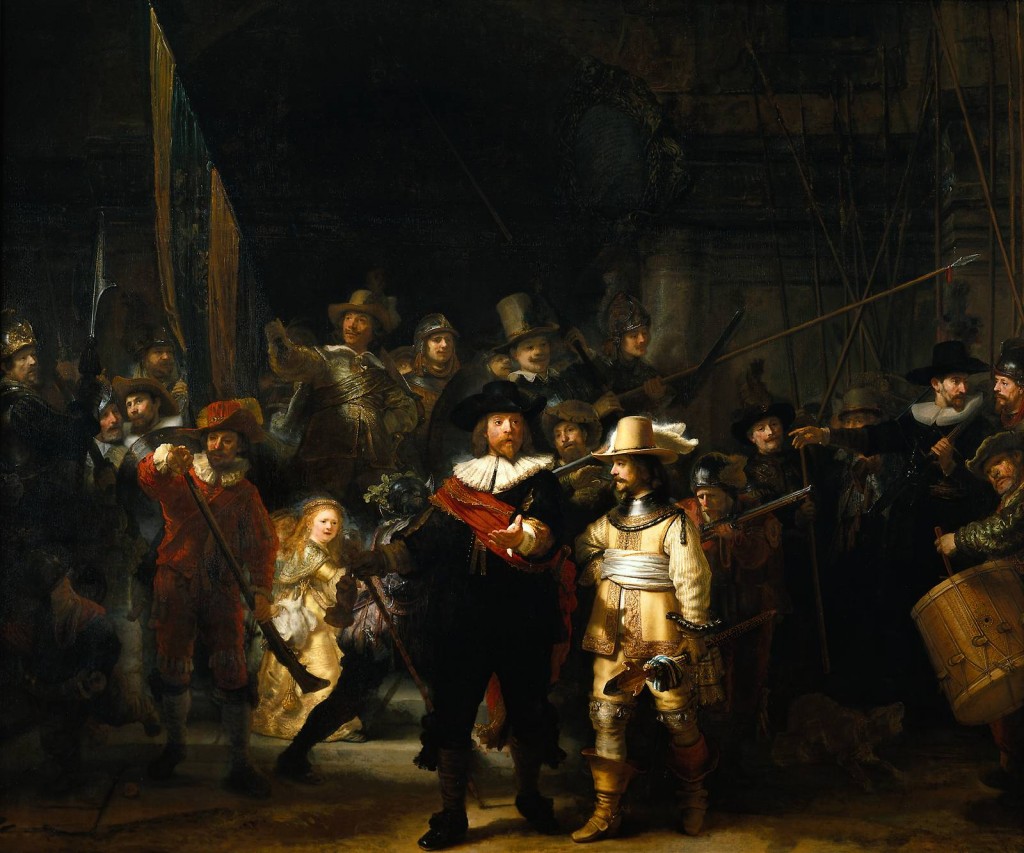| Painting Name | De Nachtwacht (The Night Watch) |
| Painter Name | Rembrandt van Rijn |
| Completion Date | 1642 |
| Place of Creation | Netherlands |
| Size | 363 cm × 437 cm (142.9 in × 172.0 in) |
| Technique | Oil |
| Material | Canvas |
| Current Location | Rijksmuseum (Amsterdam Netherlands) |
The most famous paintings in the world generally haven’t been found with any major historical events (except The Last Supper by Leonardo da Vinci and The Creation of Adam by Michelangelo). The subjects of most such paintings have been a portrait of a rich woman or a girl, a group or a portrayal of a landscape. The subject was nothing in particularly that much adorned or famous or important at the time those painting were being created. The subject got famous after the spectacular paintings by the painter got revealed towards the world and more importantly the unique features of those paintings which helped those paintings becoming famous.
The represented painting, The Night Watch by Rembrandt van Rijn, doesn’t fit in the category. The subject is real and important but not as much that it was able to create a magnificent dent in the history books. While on the other hand, the painter who painted it, made such an effort with his unique painting styles in 1642, that it became a phenomenon and one of the most fitting specimen for the chiaroscuro painting style.
Today, generally known as The Night Watch, the real name of the painting was The Company of captain Frans Banning Cocq and Lieutenant Willem van Ruytenburch preparing to march out. The old title explains the subject more clearly. The two figures glorified in the center place are Captain Frans Banning Cocq and his Lieutenant Willem van Ruytenburch. The group represented was called Schutterij– a volunteer citizen militia in the medieval Netherlands. The members of the group were called Schuttersgilde, meaning “shooter’s guild”. They were formed to save any particular city from the unexpected attacks or fire. In the leisure time, they would gather in a church.
The moment depicted is showing captain Cocq’s guild marching out. It was commissioned to Rembrandt by the members of the guild. He got pretty impressive amount of money for the commission at the time.
The factors which attract a bystander quickly are its enormous size: around 12 x 14 feet. Other factor is the chiaroscuro technique which is heavily used in the painting. Moreover, another factor which is more likely to be perceived by experienced critics is the perception of motion. The same thing we see in some images which seem moving when we move our eyes on the image. Though, in the image motion perception is used on very basic level. Moreover, the represented painting is not the full, original one.
In early 18th century, the movie trimmed on all its sides, to fit it between two columns. Today, the idea of cutting a painting would sound horrific and unholy but before 19th century it was a common practice. Another loss by the cut down was two characters in background on the left hand side of the painting.
The cut down part on the upper side had some elements, which is said to give the painting a perception of motion.
Visually stunning the painting could be called Rembrandt’s Last Supper, as it gave the same respect and name to the artist with mostly similar size factor and unique features. Though, as The Last Supper was a fresco it wasn’t vulnerable towards knives, while The Night Watch is oil on canvas, which became the target of a maniac in 1975. He damaged the painting by a knife severely.
Though, the modern technique restoration are very good and the painting is hanging in Rijksmuseum, Amsterdam with the slightest visual of the damage.



